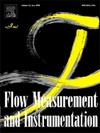Choke flow oil rate through surface data: Modeling via rigorous methods
IF 2.3
3区 工程技术
Q2 ENGINEERING, MECHANICAL
引用次数: 0
Abstract
Accurate estimation of choke flow oil rates under critical flow conditions is essential to optimizing crude oil production. This study utilizes field data derived from a Middle Eastern oil production area, incorporating surface parameters such as choke size, wellhead pressure, gas-oil ratio (GOR), basic sediments and water content (BS&W), and oil API to predict oil flow rates through Random Forest machine learning models. Advanced metaheuristic optimization techniques enhanced hyperparameter tuning and model performance, including the Bat Algorithm, Genetic Algorithm, Cuckoo Search Algorithm, and Dragonfly Algorithm. The data-driven models were developed using k-fold cross-validation to ensure robustness and minimize overfitting. Comparative analysis of optimization methods reveals that the Genetic Algorithm delivers superior results across key performance metrics, including R2, MSE, and AARE%, validating its efficacy for predictive tasks. This study emphasizes integrating advanced optimization methods with machine learning models to improve oil extraction operations' reliability, predictive accuracy, and production efficiency.

通过地面数据的节流流油率:通过严格的方法建模
准确估计临界流量条件下的节流流油速对于优化原油产量至关重要。该研究利用来自中东产油区的现场数据,结合地面参数,如节流阀尺寸、井口压力、气油比(GOR)、基本沉积物和含水量(BS&;W)以及石油API,通过随机森林机器学习模型预测石油流量。先进的元启发式优化技术增强了超参数调谐和模型性能,包括蝙蝠算法、遗传算法、布谷鸟搜索算法和蜻蜓算法。使用k-fold交叉验证开发数据驱动模型,以确保鲁棒性并最小化过拟合。优化方法的对比分析表明,遗传算法在关键性能指标(包括R2、MSE和AARE%)上提供了优越的结果,验证了其对预测任务的有效性。本研究强调将先进的优化方法与机器学习模型相结合,以提高采油作业的可靠性、预测准确性和生产效率。
本文章由计算机程序翻译,如有差异,请以英文原文为准。
求助全文
约1分钟内获得全文
求助全文
来源期刊

Flow Measurement and Instrumentation
工程技术-工程:机械
CiteScore
4.30
自引率
13.60%
发文量
123
审稿时长
6 months
期刊介绍:
Flow Measurement and Instrumentation is dedicated to disseminating the latest research results on all aspects of flow measurement, in both closed conduits and open channels. The design of flow measurement systems involves a wide variety of multidisciplinary activities including modelling the flow sensor, the fluid flow and the sensor/fluid interactions through the use of computation techniques; the development of advanced transducer systems and their associated signal processing and the laboratory and field assessment of the overall system under ideal and disturbed conditions.
FMI is the essential forum for critical information exchange, and contributions are particularly encouraged in the following areas of interest:
Modelling: the application of mathematical and computational modelling to the interaction of fluid dynamics with flowmeters, including flowmeter behaviour, improved flowmeter design and installation problems. Application of CAD/CAE techniques to flowmeter modelling are eligible.
Design and development: the detailed design of the flowmeter head and/or signal processing aspects of novel flowmeters. Emphasis is given to papers identifying new sensor configurations, multisensor flow measurement systems, non-intrusive flow metering techniques and the application of microelectronic techniques in smart or intelligent systems.
Calibration techniques: including descriptions of new or existing calibration facilities and techniques, calibration data from different flowmeter types, and calibration intercomparison data from different laboratories.
Installation effect data: dealing with the effects of non-ideal flow conditions on flowmeters. Papers combining a theoretical understanding of flowmeter behaviour with experimental work are particularly welcome.
 求助内容:
求助内容: 应助结果提醒方式:
应助结果提醒方式:


